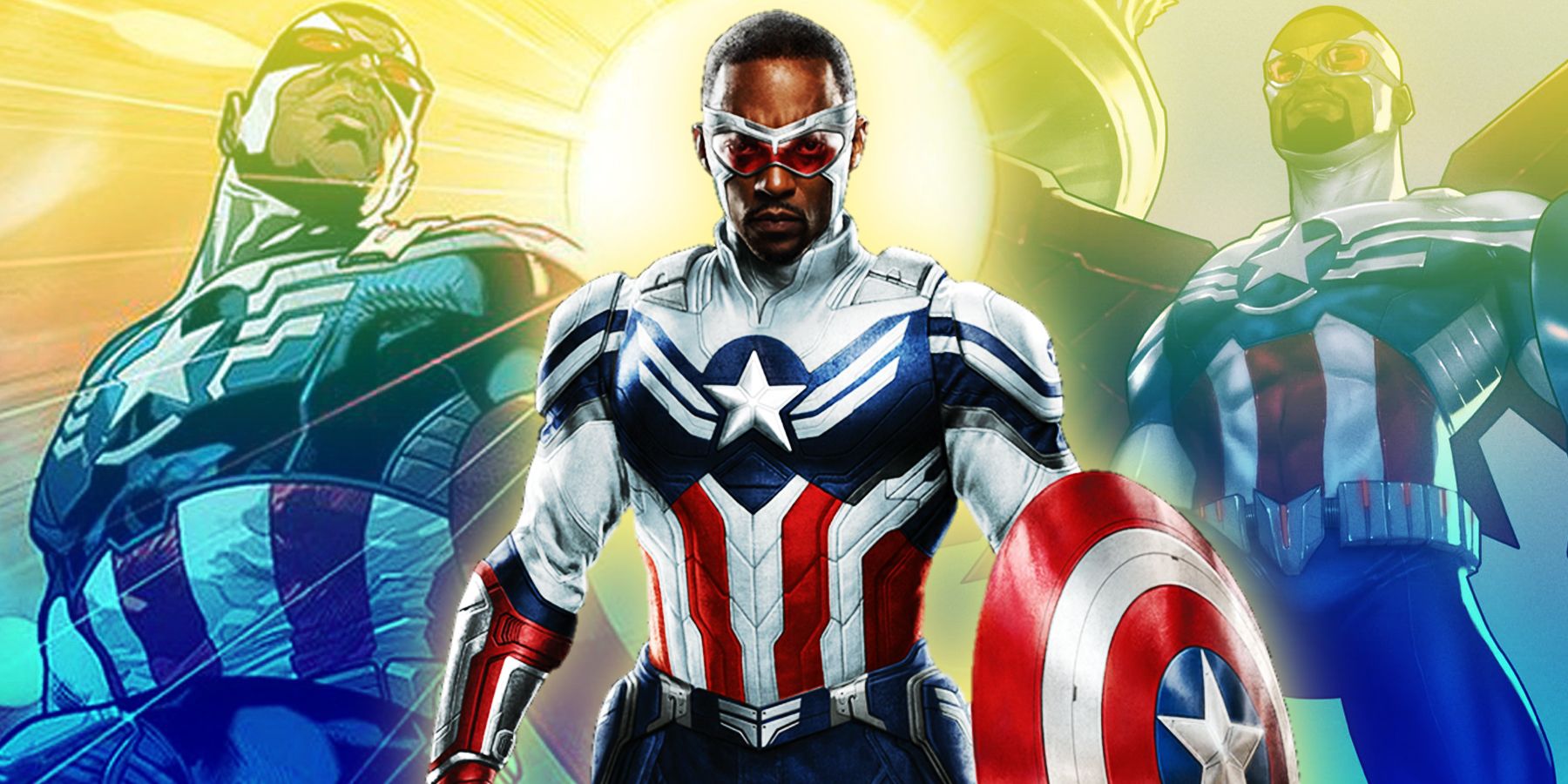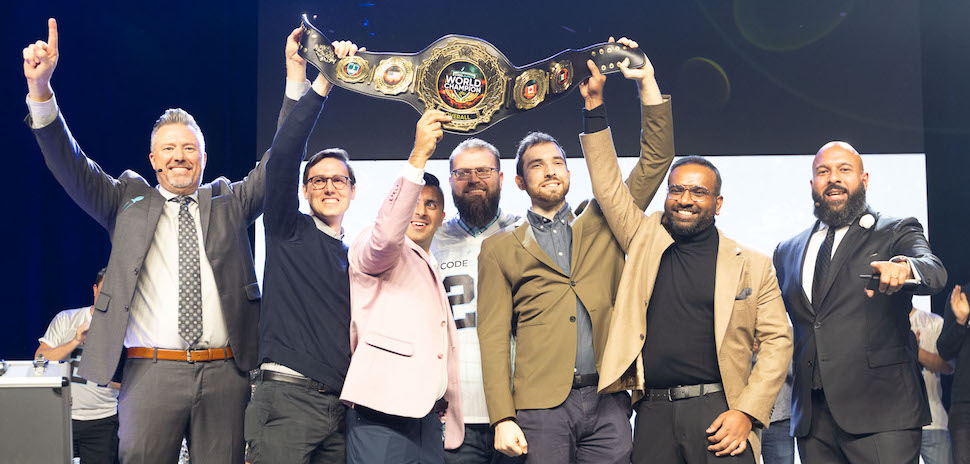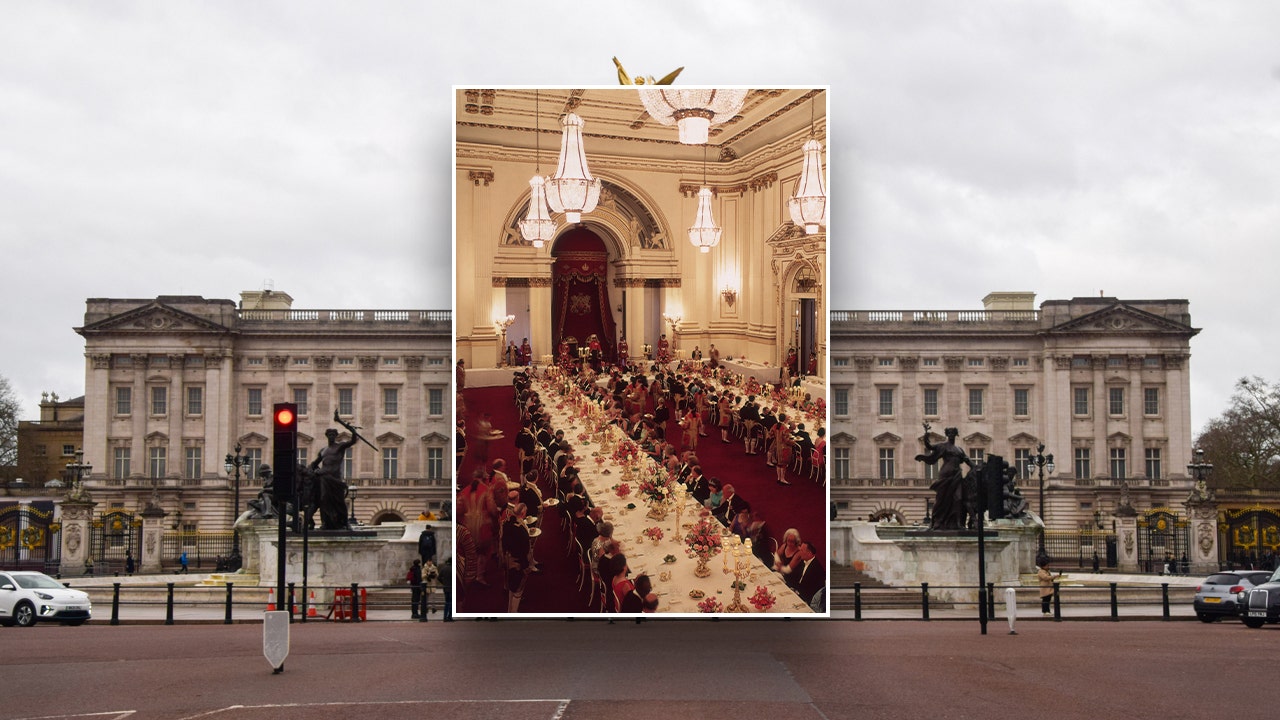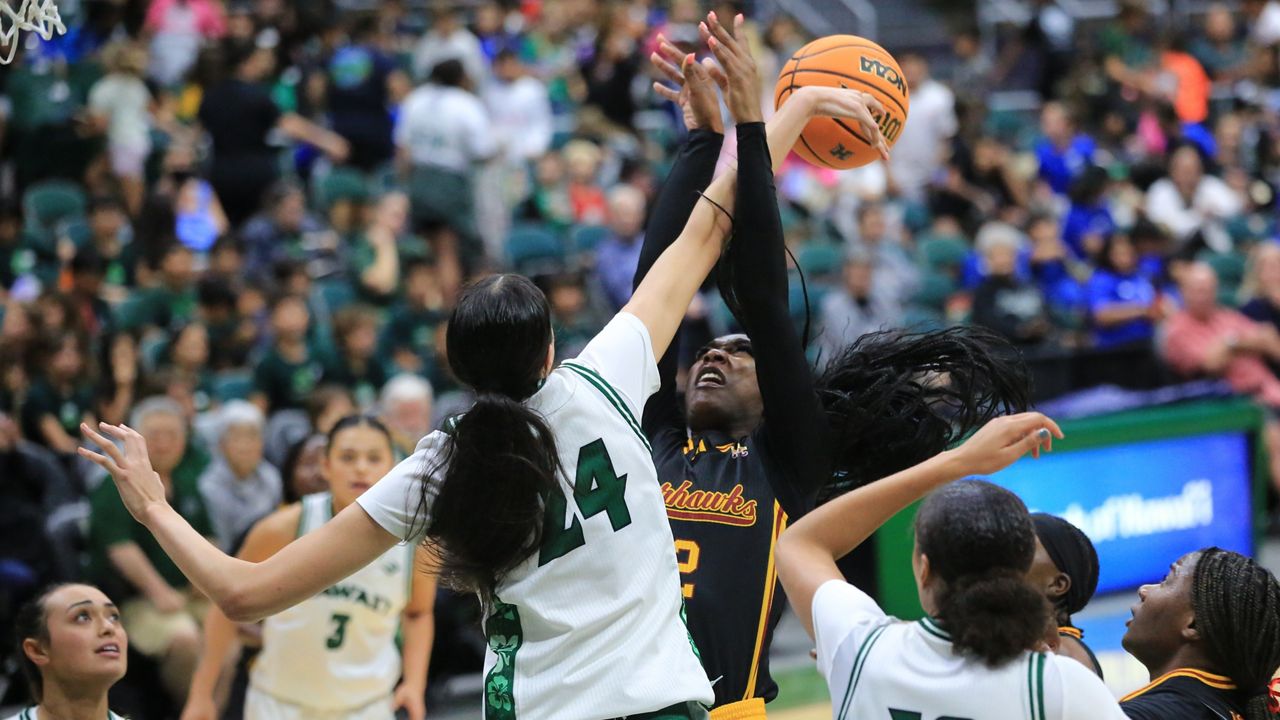Fashion
High-Street Fashion Seeks Opportunity in the Congo

A “real Congolese” has taste and fashion in his blood, says Franck Ndombe-Ndombe, a costumier and music video director based in Kinshasa, a city of 17 million people and the capital of the Democratic Republic of the Congo.
“If you have ever been to the DR Congo or neighbouring Congo-Brazzaville, you would have heard of ‘Sapeurs and Sapologie.’ The terms were derived from the acronym SAPE, which stands for Société des Ambianceurs et des Personnes Elégantes (The Society of Festive and Elegant People). It’s not an official association but a cultural movement or trait that distinguishes the Congolese people as lovers of quality fashion.”
Images of flamboyant dandy sapeurs and dedicated female sapeuses strutting through the dusty, vibrant streets of Congolese cities have inspired many fashion designers over the years, including London’s Paul Smith and Balmain’s Paris-based creative director Olivier Rousteing — not to mention countless stylists in these and other fashion capitals.
“Generally, it is not considered good practice among the sapeurs to have any fake labels. Most have day jobs and earn very little [so] they try to save a little here and there and it may take them years before they have enough to buy a [designer] suit,” photographer Tariq Zaidi told Vogue Scandinavia in 2020, when he published a book on the subculture called ‘Sapeurs: Ladies and Gentlemen of the Congo.’
“They would prefer to spend US $100-200 on a shirt rather than save money to buy a house or a car or motorcycle. Their priority is to look amazing at any cost,” he added, describing how bartering also plays a part. “If one [sapeur] has a Chanel tie and the other a Dior shirt, they may swap.”
While it is difficult to measure the contribution of the sapeurs movement to the fashion economy of the DR Congo, some observers believe it has helped consumers in wider Congolese society — both rich and poor — build habits of being trend-aware and fashion-conscious.
“This movement entangles almost every Congolese. You want to look good. You want to impress. You want to be chicer than your neighbour,” says Antoine Fred Kabamba, a retired arts and humanities specialist. “Sapeur simply means a well-dressed individual.”
Congo’s Fashion Paradox
The competitive element of the DR Congo’s fashion culture creates a paradox in the market: disproportionately high demand for clothes and accessories in a country with one of the lowest income levels on the African continent. Gross national income per capita in the DR Congo is $660, compared to $1,930 in Nigeria and $2,110 in Kenya, according to the World Bank.
“This social pressure most times pushes people to break the bank to buy clothes. Everybody strives to keep up with the Joneses, no matter the price to pay. That’s Congo for you,” Kabamba adds.
Ndombe-Ndombe puts it in starker terms: “a Congolese is happy when he is well dressed but not [necessarily] when his stomach is full,” he quips.
Awareness of international brands is also disproportionately high in the country, but the lack of official distribution channels has given rise to a chaotic market environment where potential buyers are in constant search. Many stores and vendors sell counterfeits, grey market parallel imports or second-hand clothing from Europe, Asia and North America.
“The apparel market in the DR Congo is very disorganised and that is one of the reasons why the industry is lagging behind. There is huge potential because Congolese love clothes and fashion but where to go to get quality products is a big problem,” says fashion reporter Blaise Mpanzu of Radio Lubumbashi, based in Lubumbashi, the country’s second-largest city with nearly 3 million people.
“Most of the stores [selling authentic branded products] are obscure. They popularise themselves through word of mouth and on social media, and you can [only get a few] products from the same label because they don’t import in large quantities, even when they do it is spread across different brands.”
Clusters of fashion vendors can be found throughout in Kinshasa. Zando market, situated downtown, is home to a group of small-scale stores with a great deal of fast-fashion and high-street labels including H&M and Zara for sale.
“This place is the first port of call for label seekers, mostly those in the low-income earning bracket,” says Bertrand Sadiki, a shop owner in the market. “We get products from anywhere, even from the United States. Some Congolese in the diaspora supply us [and] some holiday makers sell their stuff to us before returning to Europe,” he says.
Quality and prices vary according to the neighbourhoods of the city. In Gombe, an upscale business and residential district, there are well-decorated, air-conditioned boutiques, where products with labels from major luxury brands can be found. Most of their offering is in unique pieces or low quantities.
“None of us get products from the official manufacturers of the brands we sell here. We get them from unofficial sources — some of the products are genuine while some are not. But we do our best to meet the local demand,” says Fabrice Junior Banza, who owns and runs Chico Boutique in the neighbourhood.
Formal retail channels and distributors are gradually proving to be viable alternatives in the Congo.
Frontier Market Pioneers
Historic landmark stores that have ceased operations like Hasson & Frère, founded in the 1930s, and Peloustore of the Ndombasi family, have helped pave the way for Indian and Lebanese investors, who currently dominate the retail sector in the country. While their key focus has been in the grocery segment, across medium sized stores and supermarkets, a few have branched out into the development of shopping centres, with spaces for local and international clothing brands.

Galerie La Fontaine is less than a year old but already a household name in Kinshasa. Located in Gombe, a few blocks from Pullman Hotel, it is commonly known as “Dubai” by locals due to its far-out architecture and glamourous interior. Boss by Hugo Boss was one of the first international brands to bow at the mall, which is reportedly linked to Indian businessman, Harish Jagtani, who moved to DR Congo in the 1990s.
Boutiques that stock products labelled as Diesel, Canali and Pepe Jeans are also present at the mall, but these indirect outlets are owned and managed by “local representatives” of the brands, according to Galerie La Fontaine.
Premier Shopping Mall, also in Gombe district, is one of the city’s hottest spots for shopping and leisure. It opened in 2001 and is currently fully occupied. There are scores of fashion stores in the three-storey complex, mostly offering small local or obscure foreign brands. The Turkish chain Koton is one of the few foreign clothing brands operating officially at the mall. KinSport, a well-known sportswear store, sells products branded as Nike, Puma and Adidas, which appear to be authentic.
The retail sector has seen some setbacks in recent years. The shuttering of the three Congolese stores of South African mass-market clothing and grocery retailer Shoprite in 2022 was a blow, but sources suggest the move was more about the state of the retailer than the local market. Reuters reported that, after the sale of its Nigerian unit a year earlier, Shoprite changed from an ownership to a franchise model on the continent.
At the other end of the spectrum is Matrix Tower Mall, which is arguably the most luxurious shopping centre in the country, attached to its namesake 22-floor mixed-use building. The mall operates over three floors, with Turkish fashion brand LC Waikiki (which has two other stores in the country) acting as an anchor tenant.
“Matrix Tower Mall enjoys the patronage of the moneyed clientele of the residential and office parts of the building complex. However, ordinary Kinois (residents of Kinshasa) also shop there,” says Jean Marc Masuaku, commerce inspector at the commune of Gombe.
Situated in a more sensitive area, close to government offices and embassies in Gombe, is Kin Plaza Mall. The shopping centre is attached to Kin Plaza Arjaan By Rotana, a five-star hotel owned by Abu Dhabi-based Rotana Hotel Management Corporation.
The Local Fashion Industry
The fashion industry in DR Congo is not limited to global brand imports and the street style of the sapeurs. But many of the small-scale domestic brands and businesses lament the lethargic state of an industry with huge potential. As the giant of the central Africa sub-region and the fourth largest population on the continent, DR Congo has cultural clout across the wider francophone zone.
“We could be bigger and stronger and richer as a fashion industry but we are far from that right now because most of the structures we have in the industry are not productive and sustainable enough,” says Patrick Muhindo, a designer based in Goma, a war-torn city of about 2 million people, many of whom have been displaced by rebel groups involved in the protracted Kivu conflict, which is concentrated in the Kivu provinces more than 2,500 kilometres from the nation’s capital.
“Some attribute DR Congo’s sleeping fashion market to the wars we have seen in this country, but I don’t agree. There is no war in Kinshasa where much of the fashion business takes place. That city has been peaceful for decades,” says Muhindo, the owner of Kuliko Art brand.
The author has shared an Instagram Post.You will need to accept and consent to the use of cookies and similar technologies by our third-party partners (including: YouTube, Instagram or Twitter), in order to view embedded content in this article and others you may visit in future.
“Most Congolese only see the fun and showing off aspect of fashion. They forget the business part of it, leaving the field for foreign investors who now dominate the business. That is another key factor.”
The DR Congo imported $5.906 million worth of textiles and clothing in 2021, according to the World Bank’s WITS data, up more than 70 percent from the previous year’s $3.450 million. China was by far the largest source market, followed by the United Arab Emirates, Pakistan, the US and India. Exports in 2021 came in at $3.288 million, mostly to Belgium, the country’s former colonial power, and neighbouring African nations.
The scale of both inbound and outbound trade remains small for a country of more than 105 million people. Yet intermittent fashion events do take place in the country, mostly in Kinshasa, with the most notable being the Congo Fashion Week founded in 2011 by Kinshasa- and London-based Marie-France Idikayi.
Lydia Nsambayi, founder of Kinshasa Mboka ya Masano, an annual fashion event, claims that the weakness of the local fashion industry is due to its “lack of identity” despite the country’s rich cultural heritage in fields like textiles and the arts.
“Our clothing style is increasingly being replaced by that of Westerners and other African countries because our fashion [industry] does not have culture as its foundation,” she says. “We don’t exploit our local fabrics and don’t develop our fashion heritage [enough] to bring out our sartorial identity.”
Marie Paule Mfulu of Association Voix du Consommateur, a consumer rights protection union, places the blame elsewhere. “One of the reasons for this sad picture is the wars we fought in the country. You don’t overcome the consequences of a war easily. Poverty is still high in our country,” she says.
DR Congo’s darkest and bloodiest periods in recent history occurred in the two wars that took place between 1996 and 2002, linked to the 1994 genocide in neighbouring Rwanda and other events. Conflicts have erupted intermittently in the years since, involving armed rebel groups operating mostly in the far east and northeast regions of the DR Congo. In all, it is estimated that around six million people have died and six million have been displaced after decades of fighting.
That has created a legacy of instability that makes international investors from many sectors nervous. As recently as May of this year, an attempted coup d’etat targeting the Congolese president Félix Tshisekedi shut down the capital for days before it was foiled. According to this year’s Fragile States Index, an assessment of countries across 12 risks and vulnerabilities indicators, the DR Congo ranks as the fifth most fragile out of 179 nations.
Brands looking to expand to the country must navigate political and economic instability, poor infrastructure and security risks. DR Congo also ranks as one of the poorest performers on Transparency International’s Corruption Perceptions Index, in 162nd place out of 180 countries in 2023.
The author has shared an Instagram Post.You will need to accept and consent to the use of cookies and similar technologies by our third-party partners (including: YouTube, Instagram or Twitter), in order to view embedded content in this article and others you may visit in future.
Despite the challenging business environment, foreign direct investment (FDI) into the country remained stable in 2022 at $1.8 billion in 2022, driven primarily by investments in offshore oil fields and mining (such as diamonds, copper, cobalt, gold and uranium), according to UNCTAD’s 2023 World Investment Report. However, “most people…have not benefitted from this wealth,” states the World Bank’s country profile for the DR Congo, noting it is among the five poorest nations in the world.
The gap between rich and poor is stark. The country’s millionaire population has grown 35 percent between 2012 and 2022, albeit from a low base, according to Henley & Partners’ Africa Wealth Report 2023. There are now an estimated 600 high-net-worth individuals in DR Congo. This cohort has rapidly propelled the country up the continent’s millionaire population ranking to 20th out of 54 African nations. The figure is forecast to rise by more than 60 percent in the decade between 2022 and 2032, one of the highest on the continent.
“We are a big country with a huge population — 450 ethnic groups — and we have mineral resources that can sustain our economy. Purchasing power will eventually grow and spending on fashion will improve,” Mfulu asserts.
The country’s GDP growth remained robust at 7.8 percent in 2023, despite dropping from a peak of 8.9 percent in 2022, supported by the dynamic mining sector. But the economy of this resource- and biodiversity-rich nation is not sufficiently diversified or developed.
DR Congo will continue to attract foreign investment due to its large population, natural resources and cheap labour, says Maxwell Bayeye, senior researcher at the University of Kinshasa’s faculty of economics and management. However, economic, social and political reform is needed to make consumer goods like clothing more affordable for ordinary people, he suggests.
“The wealth needs to trickle down, minimum wage needs to improve and inflation needs to be contained. That is the only way we can boost the purchasing power of the [struggling] masses… which would have a positive impact on the fashion economy.”










